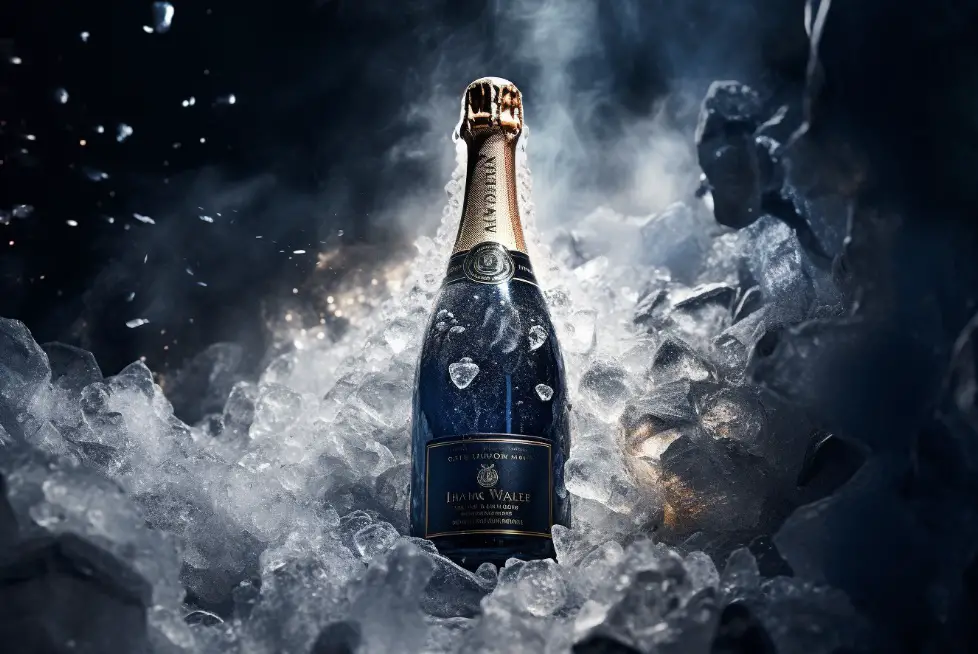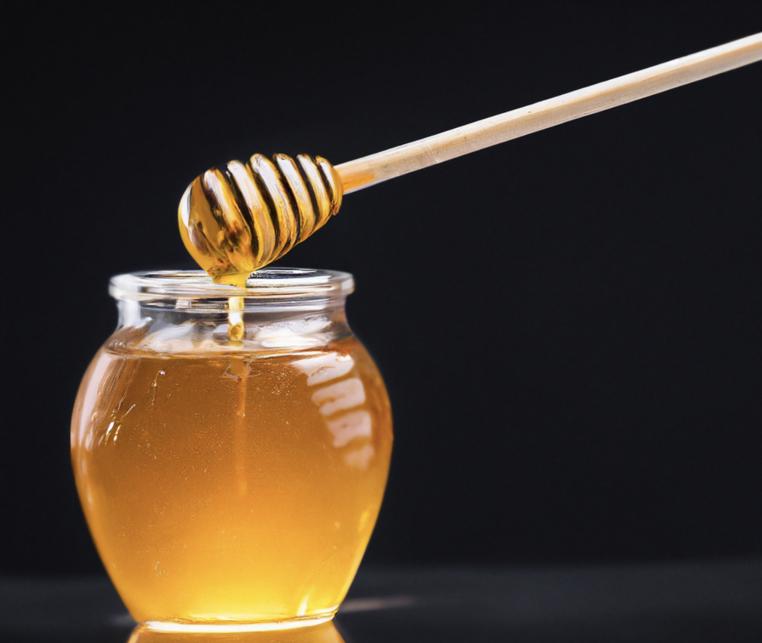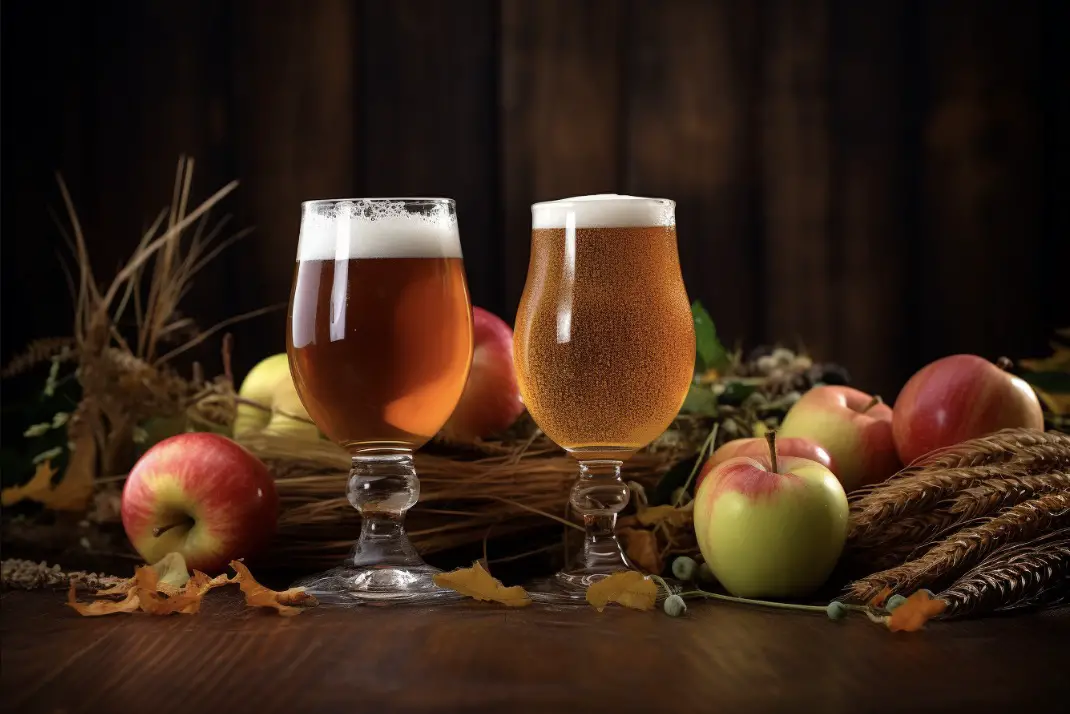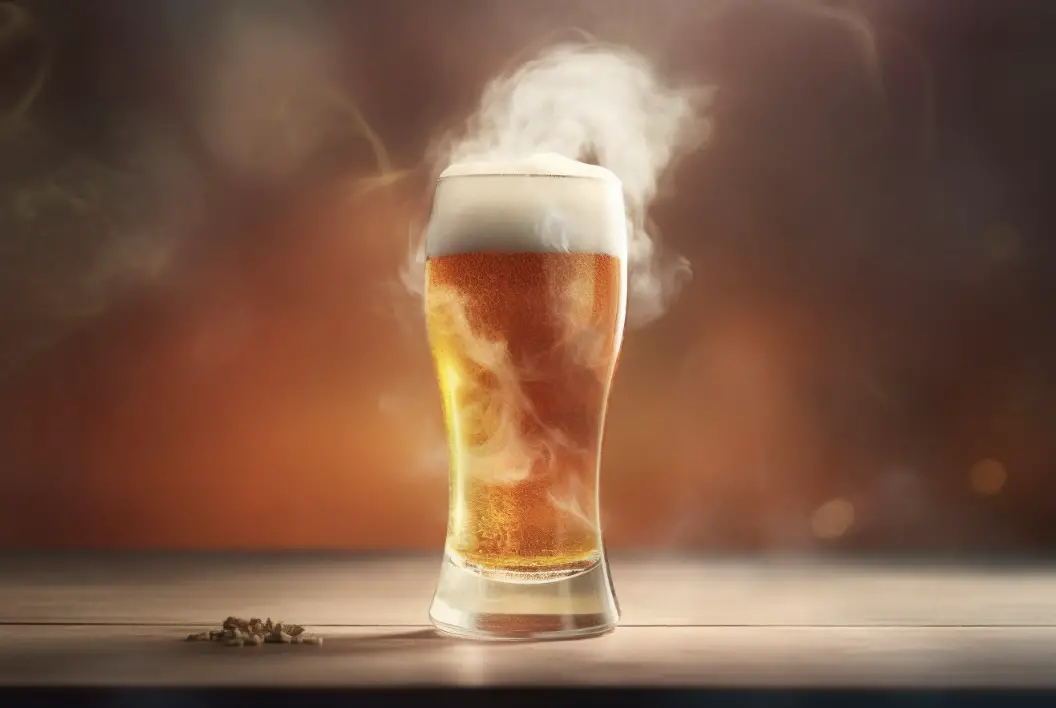If you’re anything like me, you’ve probably had the unfortunate experience of forgetting a bottle of champagne in the freezer. Whether it was a well-intentioned attempt to chill the bubbly quickly before a celebration or just an oversight, the result is often a frozen solid bottle.
So, how do you defrost frozen champagne? Read on, and I’ll share with you my tips and tricks for handling this delicate situation.
What to do if you accidentally freeze a bottle of Champagne?
If you accidentally freeze a bottle of Champagne, the first thing to do is to remove it from the freezer and place it in the refrigerator. Let it thaw slowly for a few hours or overnight. Avoid shaking or agitating the bottle during this process.
Freezing can cause the Champagne to lose its carbonation and potentially alter its flavor, so it’s best to consume it soon after thawing – but make sure all ice is gone before opening or the carbonation will be lost even faster!
Always inspect the bottle for damages before taking it out of the freezer. If cracks are present, better just trash the whole bottle as it will spill all over your fridge if you move it…
However, keep in mind that the quality may be compromised, so taste it before serving!
Step-by-Step: How to Defrost Frozen Champagne
Firstly, don’t panic. Your champagne can be saved. Here’s what to do:
1. Move the bottle to the refrigerator: The refrigerator provides a controlled environment where the champagne can defrost slowly and safely. This lessens the risk of the cork popping out due to a rapid change in temperature.
2. Wait for it to defrost: This can take anywhere from 2-6 hours, depending on how frozen your champagne is. It’s important not to rush this process; a slower defrost is better for the champagne.
3. Check the bottle: Once the champagne has defrosted, carefully check the bottle. The freezing process might have caused some separation or changes in the color and consistency of the champagne.
4. Taste test: Finally, pour a small amount into a glass and give it a taste. If it tastes fine, then your defrosting mission has been a success!
Alternative Methods
If you’re in a hurry, there are a couple of ways to speed up the defrosting process:
1. Use a wine chiller or bucket with water and ice: A wine chiller can defrost while still chill your champagne somewhat faster than a refrigerator. Use a small amount of ice and then add about 10 times more water before submerging the bottle. You can leave out the ice all together if you are in a real hurry. Just make sure to monitor the process closely to avoid damaging the champagne bottle.
2. Just leave it out at room temperature: This method can also speed up defrosting. However, like the wine chiller, it requires close monitoring.
The Importance of Proper Champagne Storage
Champagne, like all wines, is a delicate beverage that requires careful storage. This doesn’t just apply to high-end bottles; even less expensive champagnes can be negatively affected by improper storage. The ideal temperature for storing champagne is between 7-10 degrees Celsius (45-50 degrees Fahrenheit).
Why You Shouldn’t Freeze Champagne
Freezing champagne is not recommended. When champagne (or any liquid, for that matter) freezes, it expands.
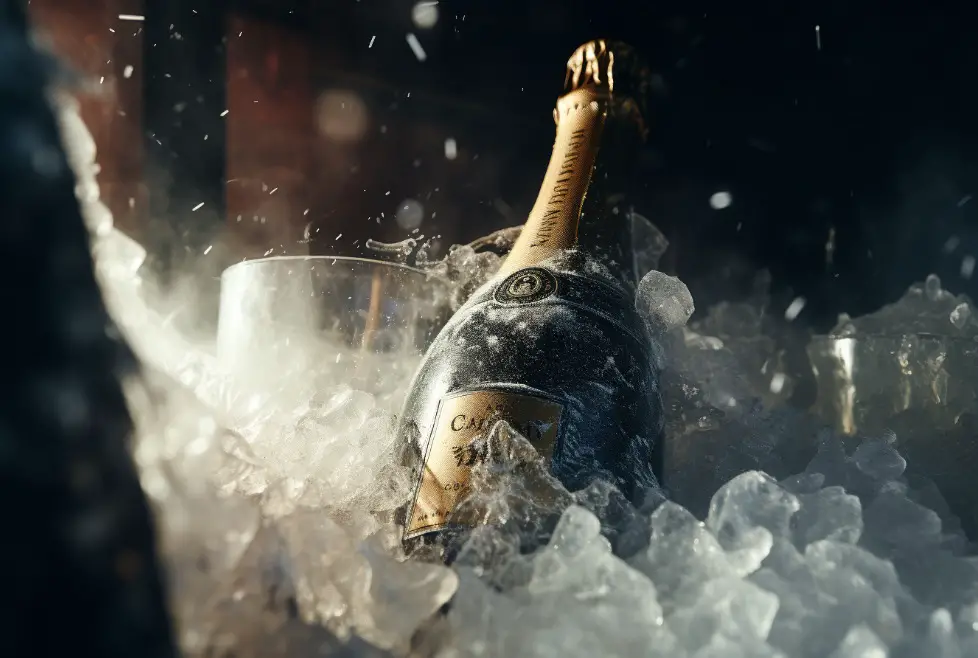
This can cause the cork to be forced out of the bottle, potentially causing a mess and, more importantly, wasting some of that precious bubbly.
If you’re lucky enough that the cork remains intact, you still have the problem of a frozen bottle of champagne. This is where my advice comes in.
How to Prevent Frozen Champagne
To prevent finding yourself with a frozen bottle of champagne, here’s some advice:
1. Don’t store champagne in the freezer for long: As already mentioned, freezing is not good for champagne. If you need to chill a bottle quickly, better methods are using a wine chiller or submerging it in a bucket of ice and water.
2. Store champagne at the correct temperature: Ideally, champagne should be stored at a temperature between 7-10 degrees Celsius (45-50 degrees Fahrenheit).
The Impact on Taste
Unfortunately, freezing and then defrosting champagne can affect its taste. The freezing process can cause a loss of carbonation, which is an important part of the champagne experience. Additionally, the defrosting process can cause some separation of the champagne, which might also affect the flavor.
Conclusions
In conclusion, while freezing champagne is not recommended, it’s not the end of the world if you find yourself with a frozen bottle. With patience and careful handling, you can successfully defrost frozen champagne. However, to preserve the taste and quality of your champagne, it’s best to try to store it properly and avoid freezing it in the first place.
10 Quick Facts about Defrosting Frozen Champagne
1. Champagne should be stored at 7-10 degrees Celsius (45-50 degrees Fahrenheit).
2. When champagne freezes, it expands, which can force out the cork.
3. Freezing and defrosting champagne can affect the taste and carbonation.
4. Defrosting in the refrigerator is the safest method.
5. It can take 2-6 hours for a bottle of champagne to defrost in the refrigerator.
6. A wine chiller or cold water bath can speed up the defrosting process.
7. You should always monitor the defrosting process closely to prevent the cork from popping.
8. After defrosting, check the champagne for changes in color and consistency.
9. A taste test is the final step to ensure the quality of the defrosted champagne.
10. The best way to prevent frozen champagne is to avoid storing it in the freezer.
FAQs
How do you defrost frozen prosecco?
To defrost frozen prosecco, it is important to handle it with care to preserve its quality and taste. The best method is to transfer the bottle to the refrigerator and let it thaw slowly over several hours or overnight. Avoid using warm water or other quick thawing methods as they can affect the flavor and carbonation of the prosecco.
What happens when sparkling wine freezes?
When sparkling wine freezes, a few things can occur. First, the carbon dioxide gas in the wine can expand, leading to an increase in pressure inside the bottle. This pressure can cause the cork to pop out or the bottle to crack. Additionally, freezing can alter the taste and texture of the wine. The formation of ice crystals can affect the balance and structure of the wine, potentially diminishing its quality. Therefore, it is best to avoid freezing sparkling wine.
Is frozen Champagne drinkable after it thaws?
Yes, frozen Champagne is generally drinkable after it thaws. However, the quality and taste may be affected. Freezing can cause changes in the texture and carbonation of Champagne, resulting in a slightly different drinking experience. It is advisable to let it thaw slowly in the refrigerator to minimize any potential damage.
What happens if Champagne gets frozen?
If Champagne gets frozen, the water expands as it turns into ice, leading to increased pressure. This can cause the bottle to crack or even explode. Additionally, freezing alters the taste and texture of Champagne, resulting in a loss of its effervescence and overall quality. It is best to avoid freezing Champagne to preserve its unique characteristics.
Is Champagne still good if it’s frozen?
No, Champagne is not good if it’s frozen. Freezing Champagne can alter its taste, texture, and carbonation, resulting in a less enjoyable drinking experience. It can also cause the bottle to crack or explode due to the expansion of liquid when frozen. It is best to avoid freezing Champagne to preserve its quality.

